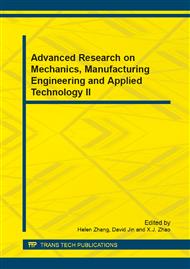p.3
p.9
p.13
p.17
p.21
p.25
p.30
p.35
Effects of Substrate Preheating on Microstructure and Interface Characterization of Al2O3-13% TiO2 Ceramic Coating Fabricated by Laser Cladding
Abstract:
In this study, Al2O3–13 wt% TiO2 ceramic powders was perset on the substrate of a GH416 Ni-base superalloy by the squash presetting method and cladding coatings were fabricated by a fiber laser. Influences of substrate preheating on the microstructure and interface characterization of laser-clad ceramic coatings were investigated. The results show that the crack formation of the clad ceramic coating can be prevented by substrate preheating. In addition, substrate preheating is helpful to form a good metallurgical bonding between the coating and substrate. Clad ceramic coatings with dense structures, crack-free, low dilutions and good metallurgical bonding to substrate were obtained under the optimum processing parameters. The cross-section of the clad coating indicated three different microstructural regions, namely, fine equiaxed crystals at the upper region, columnar crystals in the middle region, and very fine equiaxed crystals at the bottom region.
Info:
Periodical:
Pages:
13-16
Citation:
Online since:
April 2014
Authors:
Price:
Сopyright:
© 2014 Trans Tech Publications Ltd. All Rights Reserved
Share:
Citation:


